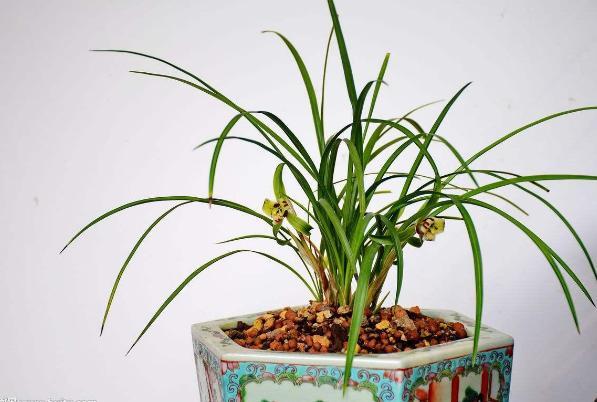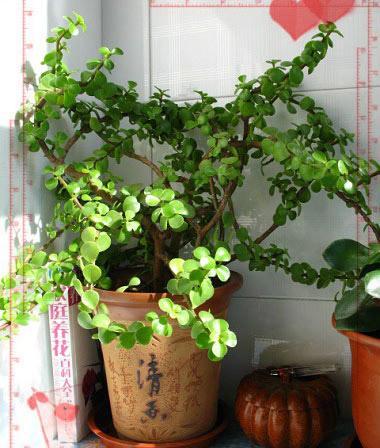Ten kinds of plants essential for Chinese courtyard landscaping

Chinese-style courtyard design inherits the literati thought of "entering into the hidden, coming out of the world", emphasizing the living realm of "the unity of man and nature". The ancient Chinese literati often use plants to realize a person's nobility, friendship and political integrity in order to show elegance.
In the choice of plants, Chinese courtyards prefer plants that are endowed with symbolic significance, such as pine symbolizes longevity, peony symbolizes wealth, and plum orchid bamboo chrysanthemum symbolizes four gentlemen to highlight their personal character.
The 10 essential plants for Chinese courtyard landscaping are as follows:
1. Loose
Pine is the most common in Chinese courtyards. Pine is an evergreen tree with a long life, so it is often regarded as a symbol of longevity.
2. Bamboo
Bamboo products have both appearance and aspiration. In the classical garden design of our country, we pay special attention to the meaning of things and compare things with morality. People always like to regard natural scenery as a symbol of moral beauty, spiritual beauty and personality beauty, while bamboo, as one of the "cold three friends", has become one of the most common plants in Chinese courtyards because of its slender appearance and tenacious character. In the design of Chinese-style courtyard, rockery, Jingshi and other courtyard sketches, if planted with appropriate bamboo, can add the level and color of the mountain, showing the potential of nature and the beauty of mountains and forests. Bamboo can also be combined with other plant materials to bring unlimited poetic and picturesque feelings into the garden.
3. Mei
Plum blossoms are most suitable for planting in courtyards, lawns, isolated plants, cluster plants and group plants. It can also be watched by potted plants or trimmed to make various pile scenes, or used as cut flower vases for interior decoration. It is an indispensable element in the Chinese courtyard. The ancients believed that "Mei takes the situation as the first", that is, shape and posture. The forms are stooping, lying on the side, lying on the side, depending on, looking forward, etc., and the posture is divided into upright, flexion and skew. Plum blossom bark is dark and rough, its branches Qiu qu rugged, charm sprinkled with a kind of unyielding masculine beauty through the vicissitudes of life. Plum blossom branches clear, clear, color harmony, or music such as swimming dragons, or sweeping down, changeable and regular, showing a strong sense of strength and line rhythm.
4. Orchid
Orchid is a perennial herb with ovate leaves, serrated edges, long and slender leaves, spring flowering and fragrant odor. it is a famous pot ornamental plant in China. Orchid like shade, avoid direct sunlight, like moist, avoid dry, like fertile, rich in humus, good drainage, slightly acidic sandy loam, suitable for ventilated environment. The earliest meaning of orchid is the mascot of love. Qu Yuan compared Lan as a gentleman in his poems, so later generations understood Lan as a noble and virtuous symbol of a gentleman.
5. Chrysanthemum
In the Chinese courtyard, chrysanthemums can be planted in the courtyard, can also be potted, placed by the pool or pavilion, can better reflect the style of the Chinese courtyard. Chrysanthemums are beautiful in shape and bright in color. Chrysanthemum has strong adaptability and lax requirements on climate and soil conditions. Chrysanthemum is resistant to drought, water accumulation, loose and fertile sandy soil with much humus, cool climate and plenty of sunshine. Because chrysanthemum has a long history, a wide variety of varieties, bright color, flower shape, noble moral and other characteristics, and deeply loved by the ancients, known as "plum, orchid, bamboo, chrysanthemum" one of the four gentlemen.
6. Rattan
Heaven and earth are leisurely and blend up and down, and if a vine winds its way up across the white wall, or the whole wall is covered with dense rattan leaves, then there will be another vibrant brushstroke in the static picture of the courtyard. In addition to the climbing vines on the wall, the rattan tables and chairs placed by the pool along the path can also add quaint charm to the courtyard. The nature and simplicity emitted from its whole body symbolize a kind of leisure and enjoyable way of life. In addition, lightweight rattan furniture is also easy to move, rattan table or rattan chair can be picked up with one hand, which is also one of the most suitable features for the courtyard.
7. Peony
Peony is the national flower of our country, which means rich and expensive. Peony is often found in Chinese courtyards. Peony, also known as Luoyang Flower and Fugui Flower, is one of the unique flowers in China and is known as the king of flowers. Peony is graceful and magnanimous, blooming rich and noble, is a symbol of auspicious wealth. Peony has a special status in the hearts of our people and has rich cultural symbolic significance.
8. Magnolia
"Magnolia nine petals, color white micro-green, fragrance like orchid, hence the name", as a deciduous tree in early spring, from the tree posture to the flower shape is very beautiful, blooming season like snow falling rain, white fragrance.
Magnolia has been cultivated in China for 2500 years. Because of its elegance and elegance, Magnolia is widely planted in temples and courtyards. After Qin unified China, Magnoliaceae including Magnolia was introduced in Afang Palace and Shanglin Garden. In the Tang Dynasty, planting magnolia has become a common form of plant configuration in the courtyard. Classical gardens are often planted in front of the hall and behind the courtyard, as well as in roadsides, lawn corners, pavilions, inside and outside leaking windows, and beside the door.
9. Plantain
The plantain is like a tree, but the quality is not wood, and the shade is high. Plantains do not know how much Chinese culture and elegance they carry. The leaves are like giant fans, the leaves are green and lovely, and the midsummer can block out the sun, giving people a cool feeling. If a few clusters of plantains are planted in the garden, the shade is dense, and the banana window is full of rain at night.
The ancients may not have planted plantains in front of the window, probably because the houses are relatively low, the view is convenient near the window, and raindrop plantains sound particularly real. In the poem, rain and plantain seem to be a perfect match, but plantain is not all about melancholy. In Nanxiangzi: "A woman on the sand, looking back, laughing at living in a banana forest" makes people yearn for it.
10. West House Begonia
"at first, like rouge, it gradually becomes valiant Mingxia, while when it falls, there is Ruosu makeup and light powder." in autumn, the bright red fruit is like a small lantern hanging branches, and its taste is sweet and sour and delicious, so it can be eaten fresh. Begonia has also been cultivated in China for 2000 years. Before the Qin and Han dynasties, there was no special description about its application in the garden literature. Begonia was used in the garden as an ornamental tree species since the Han Dynasty.
In the Tang Dynasty, the Ji Mountain of Pingquan Village in the country villa garden took Begonia as the main scenery. The word "begonia" first appeared in the Song Dynasty. The Song Dynasty literati generally like to take Begonia as the theme, or poetry, or text, the emperors of the Song Dynasty also attached great importance to Begonia, the real emperor after the imperial system of flowers mixed flowers ten, with Begonia as the first chapter, give the near minister to sing and. In the Ming and Qing dynasties, begonia was used not only in royal gardens and private gardens, but also in temple gardens, such as the Begonia courtyard in Fahua Temple in the Qing Dynasty. In the Qing Dynasty, public gardens such as du Fu's thatched cottage and ethnic minority gardens such as Xizang's manor gardens were also widely used.
- Prev

Advanced scientific orchid cultivation technology old seedlings can send 4 new seedlings and take five steps to raise old, weak, sick and young orchids.
In addition to orchid "cancer"-viral disease "Balas", how to raise old plants, weak plants, diseased seedlings and seedlings of orchids? The practice shows that if the scientific method is used to cultivate quickly, an old seedling can produce 4 new seedlings in a year.
- Next

Raised a pot of purslane, the neighbors envied that it was a golden branch and jade leaves, regretting that they had just learned.
Now more and more people grow flowers and grass, which has obviously become an indispensable part of life. I am a person who likes to grow flowers very much. Although some flowers are not raised well, I always take care of them with my heart, so they are better than those of my neighbors.
Related
- Wuhan Hospital Iron Tree Blooming Result Was Instantly Frightened by the Gardener Master
- Which variety of camellia is the most fragrant and best? Which one do you like best?
- What is the small blue coat, the breeding methods and matters needing attention of the succulent plant
- Dormancy time and maintenance management of succulent plants during dormancy
- Minas succulent how to raise, Minas succulent plant pictures
- What are the varieties of winter succulent plants
- How to raise succulent plants in twelve rolls? let's take a look at some experience of breeding twelve rolls.
- Attention should be paid to water control for succulent plants during dormant period (winter and summer)
- Watering experience of twelve rolls of succulent plants
- Techniques for fertilizing succulent plants. An article will let you know how to fertilize succulent plants.

